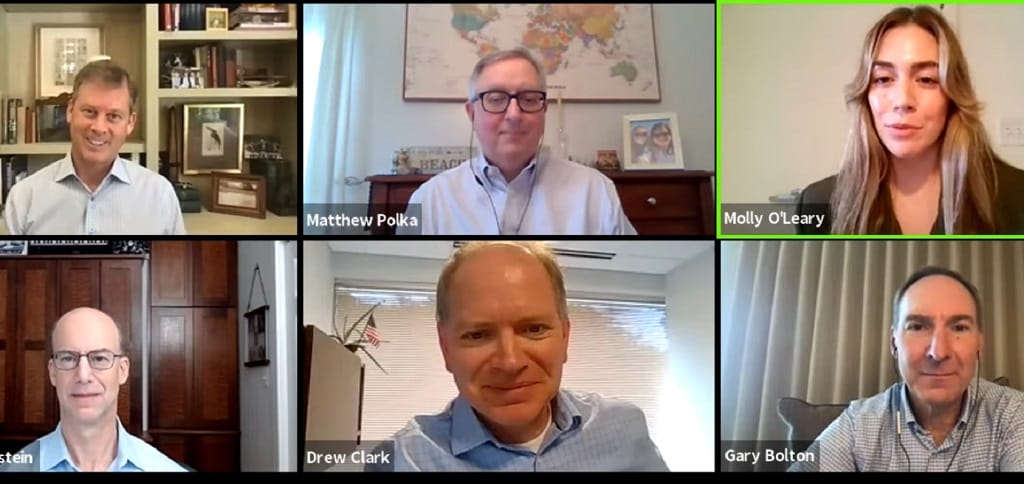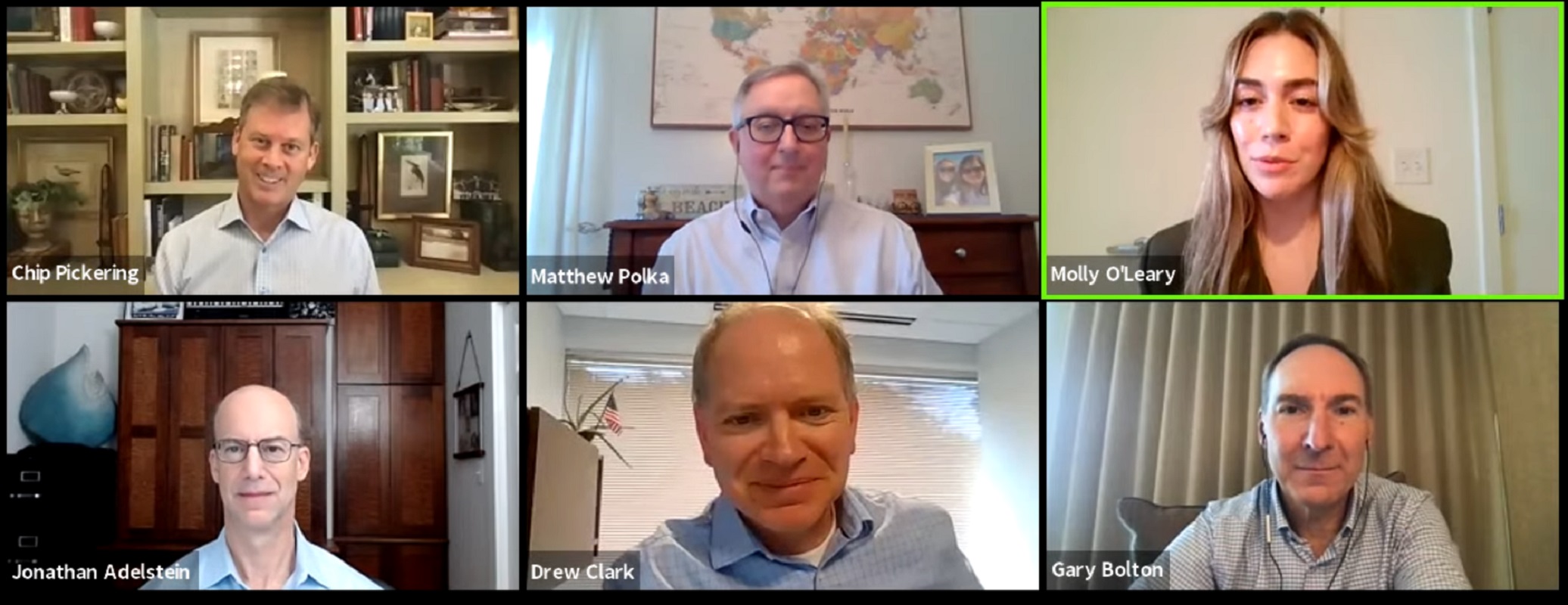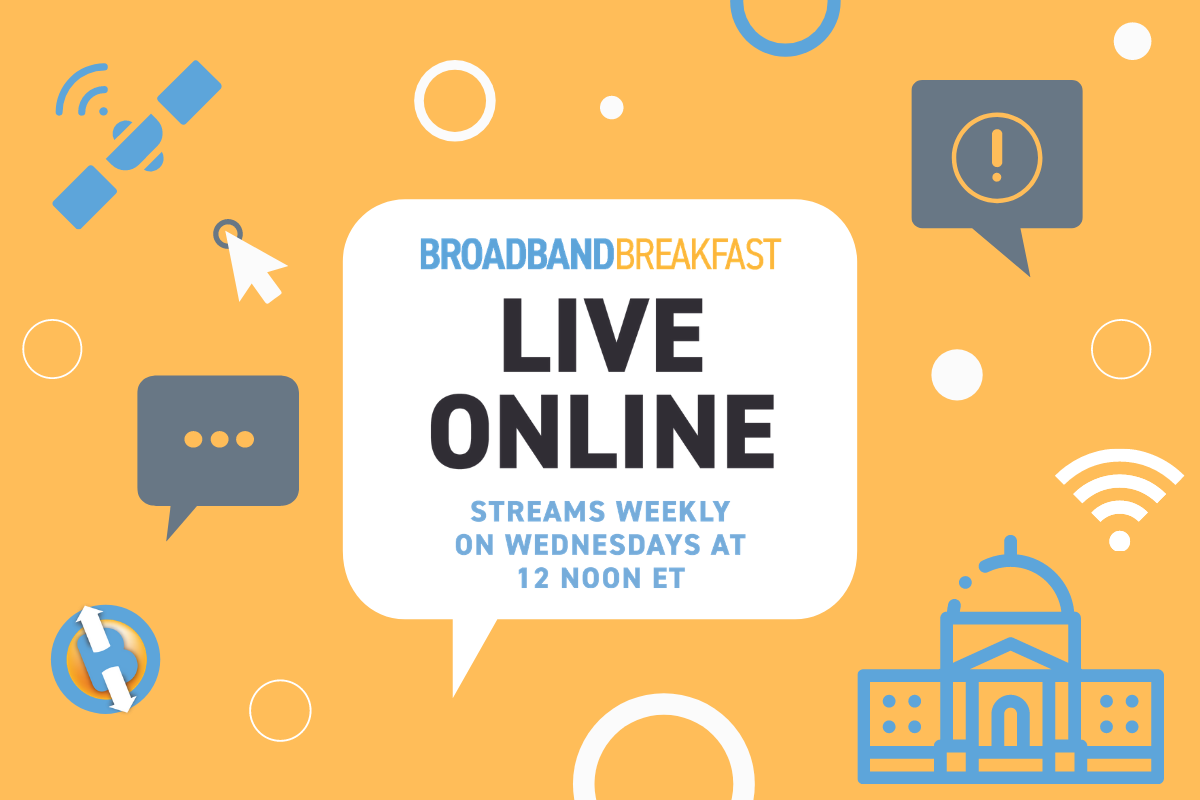Citing Flexibility, Broadband Breakfast Panelists Double-Down in Support for Infrastructure Bill
Panel with broadband and wireless industry lobbyists wrestle with need for symmetrical internet, and press for fiber.
Ahmad Hathout

September 1, 2021 – Panelists hosted by Broadband Breakfast Wednesday said the Senate-passed infrastructure bill’s flexibility – with its speed threshold parameters and grants to states – will ensure the focus is on future-proofed networks.
The bill, which will be up for either a House amendment or vote later this month, allocates $65 billion to broadband – a chunk of which is portioned out to be delivered to the states – and sets as “underserved” areas without 100 Megabits per second download and 20 Mbps upload while keeping the current federal definition of 25 Mbps x 3 Mbps as “unserved.”
The definitions surrounding the speed threshold in the bill, the head of the Fiber Broadband Association said Wednesday, is critical to allow for the flexibility to not only get those areas connected soon but to allow for scale in the future.
“I call it ratcheting,” Gary Bolton said. “If you put the underserved at too high levels then the concern was that people would cherry pick and do the easier, lower-cost to build areas and still leave the hardest-to-reach people left out. And so there was a lot of focus on, okay let’s make sure we prioritize reaching unserved as the old definition of 25 x 3 and then let underserved be 100 x 20.”
Bolton told Broadband Breakfast last week that, eventually, the market, which is building toward deploying fiber plus the investments and speed thresholds in the bill will mean that the country will be moving quickly toward symmetrical internet, where the upload matches the download speed.
Matthew Polka, president and CEO of ACA Connects, which represents small to medium independent communications companies, said the bill strikes a “reasonable balance” that is the “best opportunity to close the digital divide,” with a focus on adoption and deployment, as well as the ability of states to control their destiny and to ensure that the money doesn’t overlap with other programs.
Debate on symmetrical speeds
But whether symmetrical speeds are needed, at least in the near term, was a point debated Wednesday.
President Joe Biden’s original infrastructure proposal in March pledged 100 x 100 speeds, which worried at least one former Federal Communications Commissioner, who said earlier this year that requiring those kinds of speeds – similar to what Bolton said – would leave behind those areas that are barely getting the federal baseline.
Chip Pickering, the CEO of INCOMPAS, a trade association dedicated to addressing competition in the industry, said Wednesday that the way toward future networks is to subsidize those networks, not put generational federal money into older technologies. That means moving from coaxial to fiber and asymmetrical to symmetrical, he said.
“What we’re seeing in the marketplace is today’s consumer may have this disparity between upload and download. But the applications of the future, and what we’ve seen during the pandemic, is a much greater need for symmetrical service,” Pickering said.
“If you look at the applications of the future, more and more symmetrical services as the base and foundation at work,” he added.
Molly O’Leary, director of government affairs at NTCA, the Rural Broadband Association, said the funding this time around should be used to invest in bigger goals.
“We keep doing this incremental approach where, first we build to 10 x 1, then 25 x 3, we really need to aim high and do a lot better than we have and finally solve this once and for all,” she said, adding “100 x 100 symmetrical really, we’re talking about fiber here and that’s scalable, it’s reliable and over the long run, it will be cost efficient, too.”
While Jonathan Adelstein, the president and CEO of the Wireless Industry Association, said wireless networks are configured to accommodate consumer needs today – not necessarily what they need in the future. He noted that his organization hasn’t seen a dramatic increase in need for upload speeds, and that the 20 Mbps in the bill would be more than enough to accommodate current demand.

Configuring wireless networks to accommodate higher upload speeds, he added, could potentially mean sacrificing download speed, and that’s currently not what the market is asking for.
“The key is to allow policymakers to determine what’s best for their community based on who is in a position to provide that service,” Adelstein said, adding that policymakers will be able to choose what they need based on factors including resiliency, speed of deployment and mobility.
On the budget reconciliation
Some panelists noted that there is a high likelihood that the bill, in its current form, will be passed by the House, based on the concern that an amendment would force the bill back for another possible conflict in the Senate.
If the bill is passed as is, then, other potential broadband measures could be added in what’s known as “reconciliation,” a House Democratic package of initiatives worth $3.5 billion.
The panelists agreed that if there are additional measures to be put into reconciliation, it would be for a long-term extension of the popular Emergency Broadband Benefit, which provides broadband subsidies to low-income households, as well as some moves to ensure that a skilled workforce is in place to build these future networks.
Wednesday, September 1, 2021, 12 Noon ET — What’s Next for Broadband Infrastructure Legislation?
Though it may have passed in the Senate, the bipartisan infrastructure framework still faces hurdles before it can be put into law. How much money can broadband expansion expect to see? Will we see a return of reverse auctions? What kind of obstacles will the bill face?
Join us on September 1, 2021 where we will discuss all of this and more during our Broadband Breakfast Live Online event!
Panelists for this Broadband Breakfast Live Online session:
- Molly O’Leary, Director of Government Affairs, NTCA – The Rural Broadband Association
- Jonathan S. Adelstein, President and CEO, Wireless Industry Association
- Matthew Polka, President and CEO, ACA Connects
- Chip Pickering, CEO, INCOMPAS
- Gary Bolton, President and CEO, Fiber Broadband Association
- Drew Clark (moderator), Editor and Publisher, Broadband Breakfast
Panelist resources:
- “Infrastructure Bill’s Broadband Piece Will Help ‘Hasten’ Move to Symmetrical Networks, FBA’s Bolton Says,” Broadband Breakfast, August 25, 2021
- “The Good, the Bad and the Ugly in the Senate’s $65 Billion Broadband Infrastructure Bill,” Broadband Breakfast, August 16, 2021
- “Infrastructure Bill Passed by Senate Includes Historic, Bipartisan Broadband Provisions,” Kathryn de Wit, Project Director, Broadband Access Initiative, Pew Trusts, August 30, 2021
- “Addressing Gaps in Broadband Infrastructure and Service Adoption: A Cost Estimation & Prioritization Framework,” ACA Connects

- Molly O’Leary serves as Director of Government Affairs, NTCA, The Rural Broadband Association, and advocates in Congress and at the U.S. Department of Agriculture to influence legislative and regulatory policy on behalf of NTCA members. Prior to joining NTCA, O’Leary worked in the U.S. Senate as a policy advisor to Sen. Tina Smith, D-Minn., on telecommunications, appropriations and native affairs. She previously served as a legislative aide to Sen. Al Franken (D-Minn.) for his position on the Senate Judiciary Committee.
- Jonathan S. Adelstein has headed Wireless Industry Association since 2012, representing the businesses that build, develop, own, and operate the nation’s wireless infrastructure. He is a former Commissioner of the Federal Communications Commission and Administrator of the U.S. Department of Agriculture’s Rural Utilities Service. He previously served 15 years on the U.S. Senate staff, culminating as a senior legislative advisor to Majority Leader Tom Daschle.
- Matt Polka is the President and CEO of ACA Connects – America’s Communications Association (ACA), a 700-member Washington, D.C., trade and federal advocacy association of independent, smaller- and medium-sized broadband, cable and phone businesses. ACAC members serve more than 10 million subscribers in smaller/rural markets and competitive areas in all 50 states. Matt has been with the organization since 1993.
- Chip Pickering is the CEO of INCOMPAS and has done so since 2014. He is also a former representative of Mississippi’s 3rd congressional district. He holds a BBA from the University of Mississippi and an MBA from Baylor University.
- Gary Bolton serves as president and CEO of the Fiber Broadband Association — the largest trade association dedicated to all-fiber-optic broadband. Prior to FBA, Gary held executive management positions at two successful venture-backed high-tech start-ups as well as at large publicly traded companies in marketing, product line management and public policy. Gary is currently an adjunct professor in business administration and management science at the University of Alabama in Huntsville and he holds an MBA from Duke University and a BS in Electrical Engineering from North Carolina State University.

WATCH HERE, or on YouTube, Twitter and Facebook.
As with all Broadband Breakfast Live Online events, the FREE webcasts will take place at 12 Noon ET on Wednesday.
SUBSCRIBE to the Broadband Breakfast YouTube channel. That way, you will be notified when events go live. Watch on YouTube, Twitter and Facebook.
See a complete list of upcoming and past Broadband Breakfast Live Online events.









Member discussion